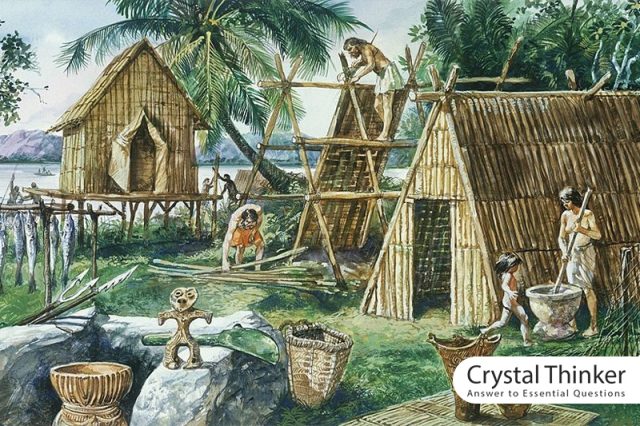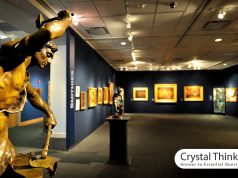What is the period of the first signs of human presence in the Japanese archipelago? What do you know about Japan’s ancient civilization? In this article, you will learn more about Japan and its history. Researchers have been able to find evidence of human existence in prehistoric times around 30,000 BC.
This article is part of our ancient civilization list we suggest you take a look at them before reading this article.
japan’s ancient civilization and Japanese skills
Around the fourth century BC, the Yayoi migrated to the Japanese archipelago and introduced iron technology and agricultural civilization to other people in the area.
Their agricultural skills led to the development of the Yayoi, and in a short period, their population multiplied. You should know that in Japan’s ancient civilization, the number of Yayoi people gradually increased from the number of Jōmon people who were the natives of the Japanese archipelago.

ancient japan history
In the Ancient Japanese civilization between the fourth and ninth centuries, we see that many kingdoms and tribes of Japan gradually united under one central government.
The Emperor of Japan controlled this seemingly centralized government.
It is interesting to know that the dynasty of the empire established at that time continues to this day. This dynasty has remained in a purely ceremonial role. The capital of the new kingdom was established in Heian-kyō (modern Kyoto) in 794. This empire marked the beginning of the Heian period and lasted until 1185. You probably know that the Heian period is considered the golden age of classical Japanese culture. It is interesting to note that the religious life of the Japanese from this time onwards was a mixture of Shinto and Buddhist religions.
Prehistoric Japan ancient and early humans in the region
Now that you are familiar with Japan’s important and historical dynasties in general, we turn your attention to ancient Japan. Stories about ancient history are attractive to many people. Many people enjoy knowing how different societies live, especially Japan’s ancient civilization.
There is information about the Paleolithic in the ancient history of Japan. Hunters arrived in Japan, although little evidence remains of their presence.
Because Japanese soil is acidic, acidic soil does not appear suitable for the fossilization process.
However, the unique axes discovered by researchers in Japan indicate that they date back more than 30,000 years.
Historical evidence suggests that early humans probably arrived in Japan by sea by sea. (Takashi, 2012)
There is evidence of human habitation in Okinawa’s Yamashita Cave about 32,000 years ago, and in the Shiraho Saonetabaru Cave on Ishigaki Island’s 20,000 years ago, humans lived in these areas. (NAKAGAWA et al., 2010)
Myths about Japan’s ancient civilization
There are stories in Shinto mythology about creating the Japanese islands by the gods Izanami and Izanagi. An exciting account in Japanese mythology describes how the gods created the Japanese islands. Japanese mythology states that the gods plunged the jewel-like spear into the early sea, making the first Japanese islands.

The creation of the gods, in addition to creating the Japanese islands, also included more than 800 kami or ghosts. Among these 800 spirits was the sun goddess Amaterasu. Thus the Shinto gods created the indigenous religion of ancient Japan.
Ninigi was the granddaughter of Amaterasu. The Japanese recognize him as the first ruler in Japanese mythology. Therefore, in mythological narratives, we always see a divine connection between the gods and the later emperors of Japan.
Japan’s ancient civilization and Japanese culture and philosophy
The samurai were often very savages who plotted to kill an ordinary person when they saw the slightest insult. The Japanese people were terrified of them during the Eid period of 1798.
But gradually, during the Edo period, a time of cultural flourishing in ancient Japanese history, the wealthy merchant classes spent part of their income on cultural and social norm affairs. (Karan, 2010)
In general, members of the business class supported the development of culture and entertainment. In addition to keeping culture and entertainment, they enjoyed their hedonistic life. These people were known as ukiyo, meaning floating world. (Hane & Perez, 2014)
Do you enjoy reading about Japan’s ancient civilization? In that case, you can read more about the lifestyle of the wealthy and culture lovers because of the lifestyle of these people. for more information, we suggest you read our seppuku article. In general, inspired the writers of that period to write popular novels such as ukiyo-zōshi and ukiyo-e art.

Theater in Ancient Japan
Theater forms such as kabuki and bunraku puppet theater were famous and popular.
The theater was a new form of entertainment for the people of ancient Japan. Playing short songs called Kuota in most theaters made these plays more attractive to the audience.
Geisha, also a new profession for entertaining people, became popular. They provided their customers with singing and dancing. (Kōdansha, 1983)
Muromachi culture in ancient Japan
During the Kamakura period, relative economic prosperity had begun in Japan despite the war. This relative boom lasted until the Muromachi period, increasing the population. Because at the end of the thirteenth century, Japan had a population of only six million people, and in 1450 the people of Japan reached ten million. (Farris, 2009)
Trade was good this century, and Japan established significant trade with China and Korea. [103] Little by little, daimyōs and other groups in Japan struck coins for this country, and Japan experienced a new economic era.
Thus, Japan’s exchange economy became a currency-based economy.
During this period, Japan was also highly developed in art, and artists engaged in painting with ink wash painting and flower arrangements and Japanese gardening, bonsai, and Noh theater. (Perez, 1998)
You may have read in history that the eighth Ashikaga shogun, Yoshimasa, was an incompetent political and military leader. Still, you should know that he played an essential role in promoting cultural change. (Bolitho, 2004)
For example, in 1397, he built the Kinkaku Ji or Golden Temple Temple in Kyoto.
Conclusion
Maybe you already know about Japan’s ancient civilization. Perhaps you already know about Japan’s ancient civilization. In this article, we gathered exciting and helpful information about the history of Japan and its ancient culture. Thank you for joining crystal thinker. If you enjoyed reading this article, please share it with your friends. You can also follow us on various social networks such as Twitter, Telegram, Instagram, and Facebook and share your opinions.
Resources:
- Takashi, T. (2012). MIS3 edge-ground axes and the arrival of the first Homo sapiens in the Japanese archipelago. Quaternary International, 248, 70–78. https://doi.org/10.1016/j.quaint.2011.01.030
- NAKAGAWA, R., DOI, N., NISHIOKA, Y., NUNAMI, S., YAMAUCHI, H., FUJITA, M., YAMAZAKI, S., YAMAMOTO, M., KATAGIRI, C., MUKAI, H., MATSUZAKI, H., GAKUHARI, T., TAKIGAMI, M., & YONEDA, M. (2010). Pleistocene human remains from Shiraho-Saonetabaru Cave on Ishigaki Island, Okinawa, Japan, and their radiocarbon dating. Anthropological Science, 118(3), 173–183. https://doi.org/10.1537/ase.091214
- Karan, P. (2010). Japan in the 21st Century. Amsterdam University Press.
- Hane, M., & Perez, L. G. (2014). Premodern Japan. Van Haren Publishing.
- Kōdansha. (1983). Kodansha Encyclopedia of Japan. Kodansha.
- Farris, W. W. (2009). Japan to 1600: A Social and Economic History (Illustrated ed.). University of Hawaii Press.
- Perez, L. G. (1998). The History of Japan (The Greenwood Histories of the Modern Nations) (1st Edition). Greenwood.
- Bolitho, H. (2004). Yoshimasa and the Silver Pavilion: The Creation of the Soul of Japan. By Keene Donald. New York: Columbia University Press, 2003. x, 208 pp. $29.95 (cloth). The Journal of Asian Studies, 63(3), 799–800. https://doi.org/10.1017/s0021911804001950









used the casting method to produce coins. Gradually, this method spread to Southeast Asia and Japan. Metal was a popular medium of exchange in the past. Because it was durable enough